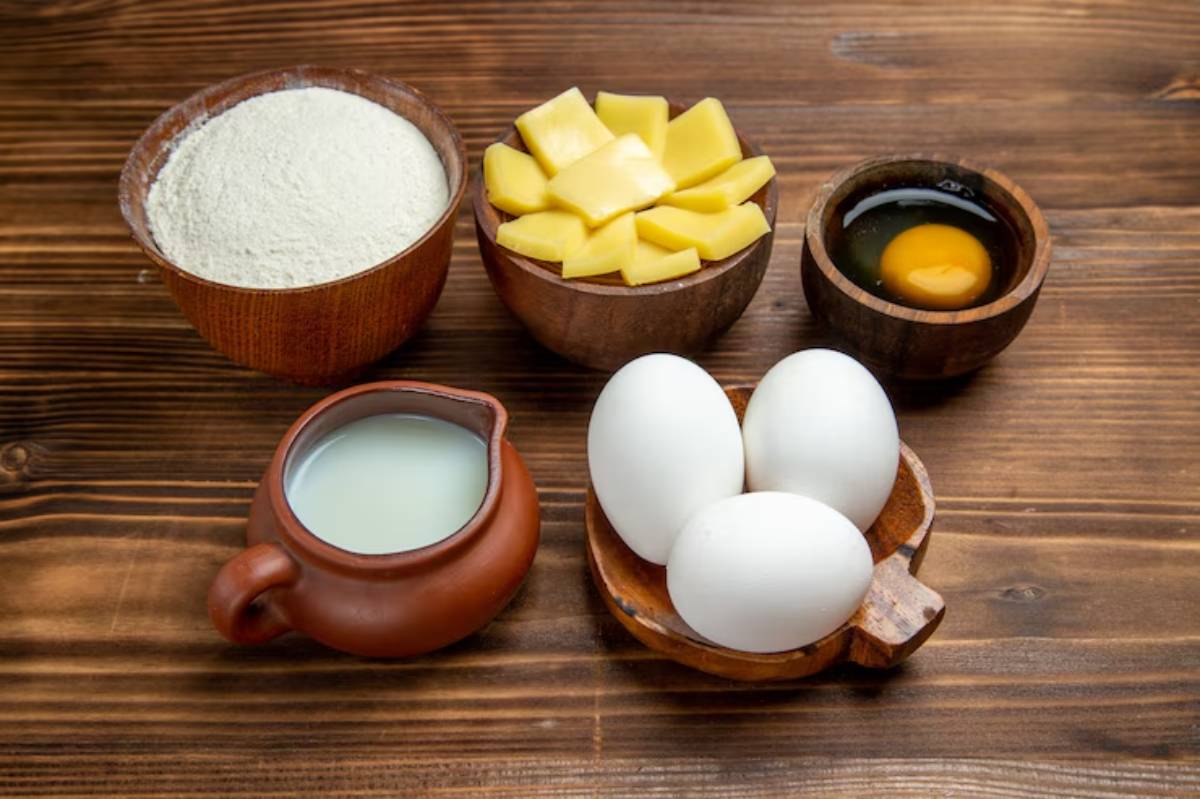
Protein Timing to Optimise Muscle Repair
You’ve just wrapped up a workout. Your muscles are burning, your heart rate is coming down, and you know you’ve pushed yourself hard. The next question is one that’s often overlooked but just as crucial as the training itself: When should you eat protein to help your muscles repair and grow?
Many active individuals focus on how much protein they eat, but protein timing — when you consume that protein — plays a powerful role in how your body rebuilds and adapts after training. It’s the difference between maximising the benefits of your effort and leaving gains on the table.
This blog explores the science of protein timing for recovery, the best types of muscle-rebuilding food to include, and practical strategies to help you get it right. Whether you’re training for strength or endurance or simply to feel stronger and healthier, this guide will help you build a sustainable, results-driven approach to protein intake.
Why Protein Is Essential for Muscle Recovery
Let’s start with the basics. During resistance or endurance training, you create microscopic tears in your muscle fibres. That’s not a bad thing — it’s how muscle grows. But for your body to repair and rebuild stronger tissue, it needs the raw materials: amino acids, the building blocks of protein.
When you consume protein after training, you:
- Trigger muscle protein synthesis (MPS), which is the body’s process of repairing and building new muscle tissue
- Reduce muscle breakdown, balancing the wear-and-tear with recovery
- Support immune function and recovery after strenuous sessions
This isn’t just about bulking up. Even if your goals are performance, recovery, or weight management, getting your recovery protein intake right can help you bounce back faster and maintain lean muscle mass.
What Is Protein Timing — and Does It Really Matter?
Protein timing refers to the strategic consumption of protein before, during, and after training to optimise muscle repair. The most widely discussed window is the post-workout anabolic window, typically within 30–60 minutes of exercise.
Here’s what the science says:
- A 2013 meta-analysis in the Journal of the International Society of Sports Nutrition found that total daily protein intake was more important than exact timing, but that timing can enhance results when total intake is already adequate.
- A more recent 2021 study published in Nutrients showed that evenly distributing protein across meals (every 3–5 hours) leads to better muscle protein synthesis than skewing it to one or two big meals.
So, while timing isn’t everything, it can amplify recovery, especially for athletes or anyone training hard multiple times a week.
Post-Workout: The Most Critical Timing Window
After training, your body is primed to receive nutrients. Your muscles are more insulin-sensitive, which means they’re better at absorbing amino acids and glycogen.
When to consume protein after training:
- Ideally, within 30–60 minutes post-exercise
- If you trained fasted, consume protein as soon as possible afterwards
Pairing protein with carbs post-training helps replenish glycogen stores and enhances recovery further. This is particularly helpful if you’re training again within 24 hours.
How Much Protein Do You Actually Need?
There’s no one-size-fits-all number, but general recommendations include:
- 1.6–2.2 grams of protein per kilogram of body weight per day for active individuals
- Around 20–40g of high-quality protein per meal, especially post-workout
- Larger individuals or those engaging in heavy resistance training may benefit from the upper end of this range
Split across 3–5 meals or snacks per day, this helps maintain a steady stream of amino acids and supports ongoing repair.
Best Muscle-Rebuilding Foods to Support Recovery
When it comes to muscle recovery foods, quality matters. Look for complete proteins — those that contain all nine essential amino acids — and fast-digesting options after training.

Top Protein-Rich Foods:
- Eggs: High in leucine, the key amino acid that triggers MPS
- Whey protein: Quick absorption, ideal for post-training
- Chicken or turkey breast: Lean and versatile
- Salmon: Includes protein plus anti-inflammatory omega-3s
- Greek yoghurt: Doubles up with protein and gut-friendly probiotics
- Cottage cheese: Great before bed for slow-release casein protein
- Tofu, tempeh, and legumes: Plant-based complete or near-complete options
Wondering how to pair these with carbs and fats for full recovery? A recovery meal plan can help simplify your post-workout eating.
The Importance of Leucine and Protein Quality
Not all proteins are created equal. Leucine is one of the most important amino acids for muscle repair. Found abundantly in animal-based proteins and some plant sources, leucine triggers the muscle protein synthesis process.
To get the most out of your meals:
- Include 2–3g of leucine per serving of protein
- Use whey protein post-training if possible, as it’s high in leucine
- If you’re plant-based, combine legumes and grains to cover all essential amino acids
Spreading Protein Throughout the Day
Instead of loading your protein all at once after training, try spacing it across your daily meals. This approach supports continuous repair and avoids storing excess energy.
Sample daily protein distribution:
- Breakfast: Greek yoghurt, oats, and seeds (25g protein)
- Lunch: Chicken, quinoa, and roasted veg (30g protein)
- Snack: Protein shake or boiled eggs and fruit (20g protein)
- Dinner: Salmon with sweet potato and spinach (35g protein)
- Optional: Cottage cheese or casein shake before bed (20g protein)
This evenly spaced intake provides sustained muscle-building support, especially when paired with proper training and recovery sleep.
What If You Miss the Post-Workout Window?
Don’t panic. While eating immediately after training helps, it’s not the end of your gains if you miss that narrow window.
Here’s what to do:
- Prioritise your next meal — make sure it includes both protein and carbs
- Stay hydrated, and don’t skip the next opportunity to refuel
- Focus on your total protein intake for the day, not just the post-gym shake
If your goal is rapid recovery or performance (say, training twice a day), more precise protein timing becomes more important.
Protein Timing for Different Training Styles
Your approach to protein timing might shift depending on how and when you train.
Strength and Resistance Training
- Prioritise a post-workout shake or meal within 30–60 minutes
- Include carbs to support muscle growth and glycogen resynthesis
Endurance Athletes
- Focus on carb + protein intake post-run or cycle
- Long sessions? Consider protein + carb sources during training as well

Early Morning Workouts
- If training fasted, refuel immediately after with protein
- Alternatively, have a small protein-rich snack 30 minutes before
Evening Training
- Include a protein-rich dinner post-workout
- Consider a slow-digesting protein before bed, like cottage cheese or casein
Combining Protein with Recovery Habits
Timing your protein intake is important, but it doesn’t work in isolation.
To really optimise recovery, combine it with:
- Proper hydration: Restore fluids and electrolytes lost during training
- Sleep hygiene: Growth hormone spikes during deep sleep
- Mobility work: Reduces stiffness and improves recovery
- Anti-inflammatory foods: Berries, fatty fish, turmeric, and leafy greens
A full recovery routine is key. If hydration is your weak link, this post workout hydration strategy can help support protein utilisation and cellular repair.
Common Myths About Protein Timing
Let’s clear up some confusion:
- “You must eat protein within 30 minutes or your workout is wasted.”
- Not true. While it’s helpful, the total daily intake matters more in the long run.
- “More protein = more muscle.”
- Only up to a point. Excess protein is not magically converted to muscle — your body uses what it needs.
- “Vegans can’t optimise protein timing.”
- Also false. With thoughtful planning and combining plant proteins, vegans can meet all recovery needs effectively.
Conclusion: Timing Your Protein, Boosting Your Results
You work hard in the gym, but the real transformation happens in recovery. And that recovery is powered, in large part, by how well you fuel your body with protein.
By getting your protein timing right, particularly after workouts, but also throughout the day, you support muscle repair, reduce soreness, and create an environment where your training pays off.
So, next time you finish a session, ask yourself: Have I given my muscles what they need to rebuild? Then act on that—with a shake, a meal, or a smart snack. Small habits, like timing your protein intake, lead to big results over time.
Train strong, refuel smart, and let your recovery do the heavy lifting.


